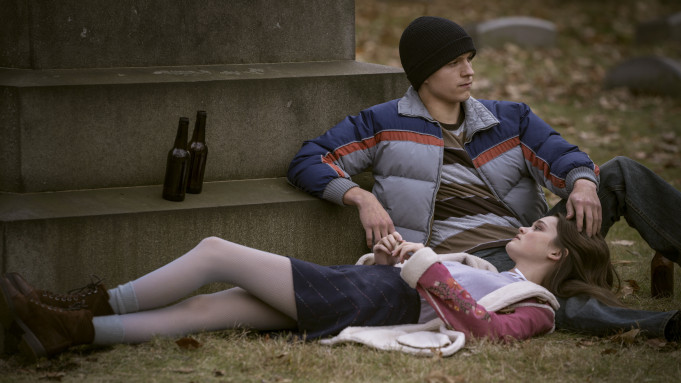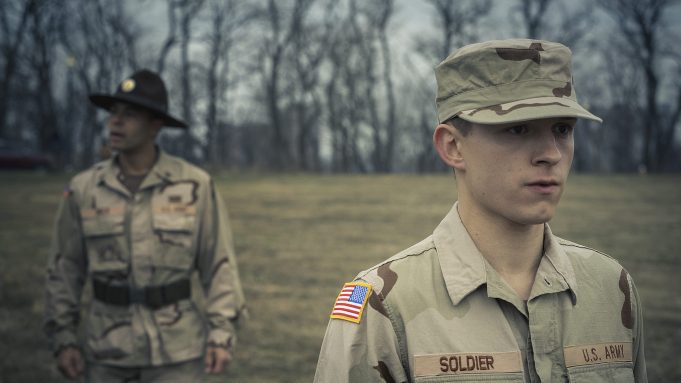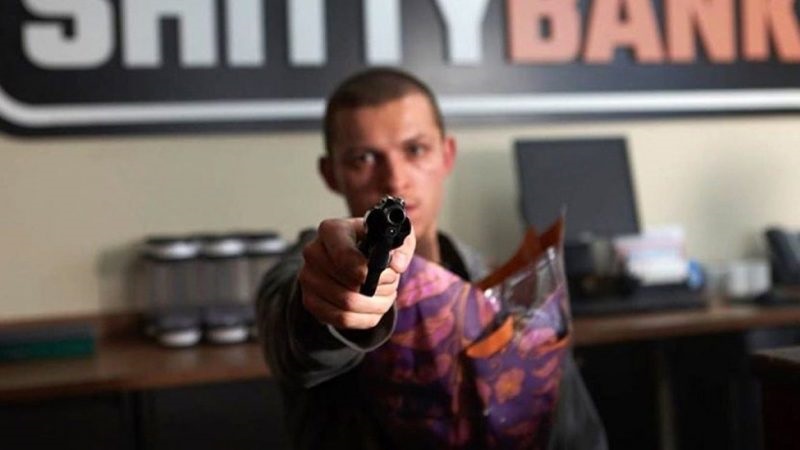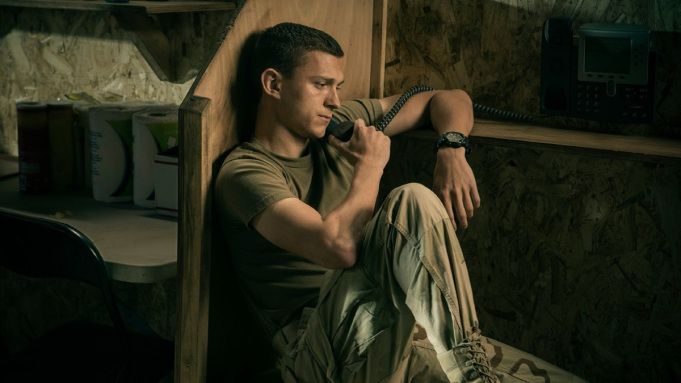
This feature will be available for streaming via Apple TV+ on March 12th, 2021.
Based on the bestselling book of the same name by Nico Walker, Cherry is a drama that tackles the massive drug and opioid-addiction problem plaguing the US. The movie boasts some major talent behind the camera with directors Anthony and Joe Russo, most famous for their work on Marvel features like Captain America: The Winter Soldier, Avengers: Infinity War and Avengers: Endgame. The filmmakers and cast certainly do their best to provide plenty of searing drama, but the end result feels far too slick and polished, also suffering from some tonal imbalances.

Cherry (Tom Holland) is a college student unhappy and disaffected by his future life prospects. His attitude changes for the better after meeting and falling for Emily (Ciara Bravo), but it’s a short-lived reprieve after she considers moving to another country. Unsure of his own future, the protagonist decides to enlist in the US Army and is sent into a war zone. The movie depicts the trauma he experiences as well as its permanent effects on his psyche upon his return. It also details his attempts at reconnecting with Emily and a growing drug addiction issue which ultimately leads him to rob banks in order to continue his habit.

The performers work their hardest to believably convey a gritty picture of modern life filled with personal tragedy. The character of Cherry is forced to react to numerous horrific events and display addictive behavior as he spirals downward. It’s a meaty role for any actor. The suffering of his cohorts is also depicted, as well as their rash, panicked and sometimes unhinged actions as they find themselves falling further and further into debt. Amidst the grimness, a dealer named Pills & Coke (Jack Reynor) adds a hint of levity to the proceedings with his blunt observations about the behavior of his clients.
But oddly enough, the filmmakers don’t always choose the most appropriate cinematic techniques to capture all these hardships. In fact, the movie uses a steady barrage of unnecessary camera tricks throughout. The photography is sharp and impressive, but it feels as if every other shot involves some kind of a visual tweak or effect. There are shots that play with focus and others capturing using eccentric lenses. When Cherry goes into basic training, there’s a sequence with captions appearing onscreen that look like something out of a comic book. One assumes that this was all done to keep the otherwise bleak story vibrant and exciting, but it ends up adding artifice to the proceedings.

And even though some of the attempts at humor result do in the odd laugh, just as many gags fall flat. The movie does have a running joke in which banks and other institutes are given amusingly broad, generic names that slowly become more negative and explicit. It’s funny at first, but when events take a more dangerous turn, lives are at risk and we’re supposed to be concerned for the fates of these figures, having sight gags clearly visible in the background doesn’t engage the viewer in the bigger emotional plight of the characters.

So, while the actors are solid, the overly flashy visuals and jumbled tone often feel incongruous and ill-advised. The end effect certainly takes away any gravitas that the story intended about opioids and drugs taking hold and ruining the lives of everyday people. Instead, the constant storytelling tricks serve as a distraction that frequently takes one out of the experience. Cherry has noble intentions, but its hyperkinetic approach to the story is overdone and undermines all the issues the movie is attempting to bring to light.


